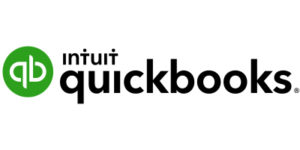We are committed to sharing unbiased reviews. Some of the links on our site are from our partners who compensate us. Read our editorial guidelines and advertising disclosure.
Gusto Payroll vs. OnPay 2025
Data as of 12/16/22. Offers and availability may vary by location and are subject to change.
- : Gusto
- : OnPay
- : OnPay
- : Gusto
- : OnPay
- : OnPay
Best payroll features: Gusto
For the most part, Gusto and OnPay offer the same stellar payroll features. Both companies automatically calculate, deduct, and file all federal and state payroll taxes at no additional cost. (In contrast, pricier competitors like ADP and Paychex charge extra for tax filing.) They also offer free multi-state tax filing, support hourly and salaried employees, and integrate with the most popular time-tracking and accounting software.
But Gusto has just enough unique perks to bump it ahead of OnPay in the best payroll feature competition. For instance, while both Gusto and OnPay automatically deduct any court-ordered garnishments for spousal or child support from employee paychecks, only Gusto automatically sends the deduction straight to the recipient. (This feature is available in every state but South Carolina.)
Gusto also includes an autopilot feature. Once you’ve entered your employees’ payroll information, you can set the software to run automatically on a set schedule—a dream for busy business owners and their employees, who need to know they’ll be paid on time, every time.
Finally, unlike OnPay, Gusto also files local payroll taxes along with federal and state taxes. If your city requires businesses to pay specific taxes, Gusto can save you some tax-filing effort.
OnPay vs. Gusto: Key payroll features
Data as of 12/16/22. Offers and availability may vary by location and are subject to change.
By signing up I agree to the Terms of Use and Privacy Policy.
Best HR features: OnPay
Honestly, it was hard to choose a winner in the best HR software features category. Gusto has more employee benefit options, but OnPay’s limited options are available in more areas. Additionally, OnPay generally has better HR management than Gusto unless you shell out for Gusto’s super pricey Premium plan (exclusive pricing)—in which case, Gusto is better.
But in the end, OnPay’s online payroll service won out. While both providers offer optional health and dental insurance, only OnPay offers health insurance in all 50 states. (Gusto’s health insurance options are limited to 37 states and D.C.) OnPay also includes HR tools you can only get with Gusto’s two priciest plans:
- Automatic paid time off (PTO) policy creation and accrual tracking
- Customized organization personnel charts
- HR document uploading and e-signing
- Extensive HR and legal compliance online resource library
If you do want expansive HR administration, Gusto’s Premium plan adds anytime access to a certified Gusto HR professional, a dedicated customer support phone line, and a thorough HR guide. But Premium is cost prohibitive for many small-business owners, and you can get most of its features (namely the HR resource guide) much more affordably with OnPay.
OnPay vs. Gusto: Key HR features with basic payroll plan
Data as of 12/16/22. Offers and availability may vary by location and are subject to change.
Gusto does stand out in one key area: employee benefits. On top of the basics—health insurance, 401(k)s, and workers compensation insurance—Gusto has a slew of other options:
- HSA and FSA options
- Health reimbursement options for the smallest of small businesses
- Commuter benefits
- Gusto Wallet app access
Don’t forget, though, that OnPay and Gusto primarily focus on payroll processing. Their HR tools are useful, but neither company offers total HR management—unless you’re willing to shell out for Gusto’s expensive Premium plan. If you want comprehensive HR administration, you’ll need an HRIS (human resource information system) solution instead. We recommend a Gusto competitor like ADP or Paychex if you’re looking to create a custom payroll and HR software package for your business.
Most affordable: OnPay
Gusto’s starting base price is the same as OnPay’s. However, OnPay has just one plan—Gusto's top-tier plans are much more expensive. That makes OnPay not just more affordable than Gusto, but one of the most affordable and comprehensive full-service payroll providers you can find.
There’s one exception to Gusto’s high pricing: its contractor-only plan. If you work solely with 1099 contractors instead of W-2 employees, Gusto waives the monthly base fee. Instead, your monthly fee is just $6 per payee, along with any premiums you decide to pay on workers compensation or health insurance. (Square Payroll offers a comparable contractor-only plan with fewer benefit options but a lower per-employee fee.)
Compare top payroll software brands’ entry-level prices
Data as of 12/16/22. Offers and availability may vary by location and are subject to change.
Best customer support: OnPay
OnPay and Gusto both offer customer service over chat, phone, and email. But only OnPay includes emergency weekend support—which is especially crucial because a mistake can cause major problems for your employees (not to mention the IRS).
Additionally, Gusto used to have some of the best customer reviews in the industry. But since the start of the COVID-19 crisis, its customer ratings have dropped noticeably. On the consumer review site Trustpilot, Gusto scores 3.5 out of 5.1 In contrast, OnPay scores a 4.3 out of 5 on the same site (in fairness, OnPay has far fewer reviewers than Gusto).2
What worries us the most about Gusto’s declining customer satisfaction ratings is the type of complaints customers have. Many of Gusto’s customer reviews from 2021 highlight increasingly poor customer service (taking over an hour to reach a customer service rep who ultimately can’t answer the question or hangs up) and, worse, crucial payroll tax mistakes that Gusto fails to fix or respond to.
By signing up I agree to the Terms of Use and Privacy Policy.
Most scalable plans: Gusto
OnPay’s single plan packs in a lot of features for the price. But if you’re hoping to add more features—especially more robust HR support—as your team expands, OnPay can’t help. Since OnPay has just one plan, the features you start out with are the only ones you get, no matter how large your team grows.
Meanwhile, Gusto has three plans. While all three have the same payroll processing features, the two pricier plans add more HR features and support. Most importantly, the Plus plan includes some particularly useful additions:
- Next-day direct deposit
- Customizable software admin permissions, including manager permissions
- Customized onboarding checklist and document e-signing
- Built-in time tracking, project tracking, and time-off requests and approval
- PTO tracking and time-off approval
Some of these features, especially the administrative permissions, apply only to bigger teams with more than one person running payroll. But self-employed business owners who manage employees and run payroll on their own will get more out of OnPay, which includes customized document e-signing, PTO accrual tracking, time tracking, and project tracking in its low price.
And, of course, each Gusto plan increases in price the more features it adds. Gusto Plus charges $12 per employee per month, double the per-payee charge of Gusto’s cheapest plan. That’s a pretty drastic increase: even QuickBooks Payroll charges just $8 a month with its priciest plan.
Best third-party integrations: Gusto
Currently, Gusto integrates with more than 100 business software apps, including QuickBooks, Xero, FreshBooks, Clover (and other point of sale apps), and 7shifts (and other time-tracking apps). In contrast, OnPay syncs with just 10 third-party apps. It does sync with QuickBooks and Xero, two of the most popular accounting software providers. Otherwise, though, its integration options are extremely limited.
So when should third-party software integrations play a part in your payroll software decision? Typically, if your company requires dozens of apps to tackle large company processes like managing customers and processing sales, software integration should play a part in your decision. And since OnPay doesn’t sync with any customer relationship management (CRM) or point-of-sale software, sales-based companies might want to consider Gusto over OnPay.
The takeaway
So now that you’ve gone through the full comparison, which payroll option is better for you: Gusto or OnPay? We’ll make it simple:
- Gusto is a great online payroll service for small businesses that want to offer unique employee benefits, companies that plan on growing from a few employees to a few hundred, and sales-based businesses that want fully integrated financial software. We also recommend Gusto to business owners who only pay contractors.
- OnPay is a solid choice for businesses that want comprehensive payroll administration and helpful HR support without paying too high of a cost. It’s also a good fit for businesses in specialized industries, especially nonprofits, farms, and restaurants.
Still can’t decide? We recommend starting with OnPay. Unlike Gusto, OnPay offers a 30-day free trial. You can try running payroll with it for exactly zero dollars, and if it’s not a good fit, you can always try out Gusto the next month (albeit at the regular fee).
Not interested in paying for a payroll system right now? Read through our piece on the best free payroll providers for small businesses on a budget.
Related content
Gusto vs. OnPay FAQ
Gusto is great for payroll. It consistently tops best payroll service lists (ours included) thanks to its accessible platform, thorough benefits options, and fully automated payroll. You can learn more about Gusto’s pros and cons on our Gusto payroll review.
Since every small business has unique needs, it’s hard to determine the best overall payroll software —after all, what’s best for your business might not be best for all businesses. We do have several favorites though, which you can learn more about in our article on the five best payroll companies.
Along with Gusto and OnPay, here’s the rundown on our top payroll software picks:
- ADP and Paychex are two HR-centric payroll companies that build customized payroll packages for midsize businesses.
- Both Patriot Payroll and SurePayroll offer affordable self-service payroll for customers who want help calculating taxes but are fine filing taxes on their own.
- Square Payroll, like Gusto, offers a contractor-only plan with no base fee.
- QuickBooks Payroll’s scalable plans and thorough features set it apart, as does its straightforward integration with QuickBooks Online, one of the world’s most popular accounting software options.
Methodology
To compare Gusto to OnPay and derive our star ratings, we analyzed each company’s strengths and weaknesses in the following areas:
- Pricing
- Payroll and HR features
- Customer service hours, modes of contact, and reputation
- Ease of use and overall functionality, including employee- and employer-facing apps
- User reviews
We also considered our payroll expert’s expertise to calculate ratings. Star ratings are reevaluated frequently and subject to change.
Disclaimer
At Business.org, our research is meant to offer general product and service recommendations. We don't guarantee that our suggestions will work best for each individual or business, so consider your unique needs when choosing products and services.







